To be fully grounded on everything that has to do with corn plants, there are certain areas that you must cover, including knowing the various corn growth stages.
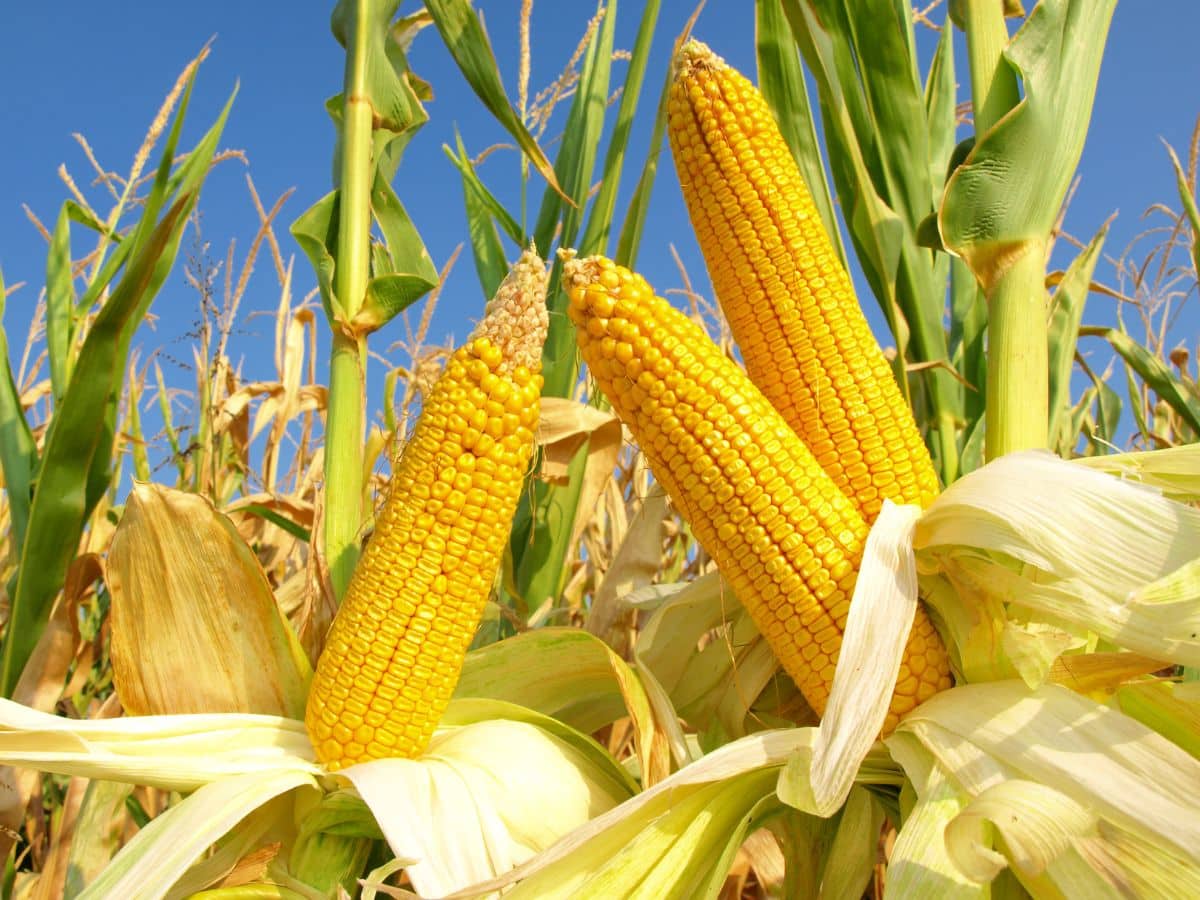
Also, factors affecting the proper growth of corn plants and what they need to grow well are all areas you need to be enlightened on to record success in your corn planting journey.
Thankfully, you will get a chance to get all the information you need to get your corn planting venture underway and have it successfully accomplished in this article.
Jump to:
Different Corn Growth Stages
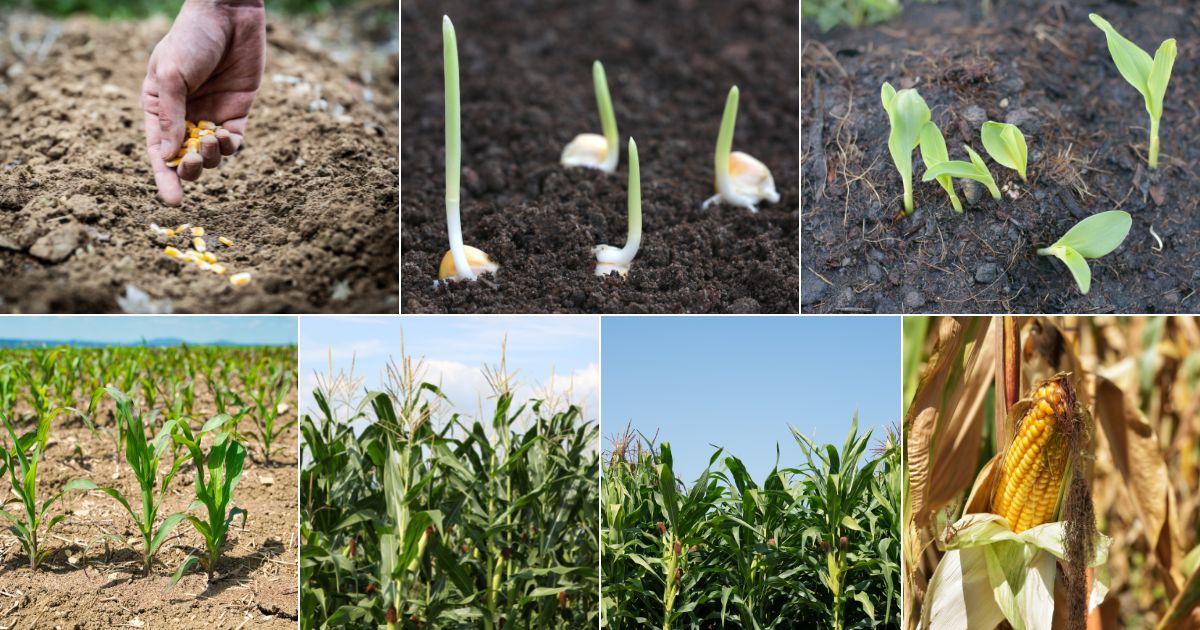
Corns are best planted in early spring. The duration needed for a newly planted corn to bring forth mature ears of corn is about 50 - 90 days. It is precisely the time frame it needs to attain the required minimum temperature.
Ideally, corn stages of growth can be divided into two main categories—the vegetative and reproductive stages of growth. However, we will take you through the planting and germination stages that precede them.
Let's get right down to it.
1. Planting Stage
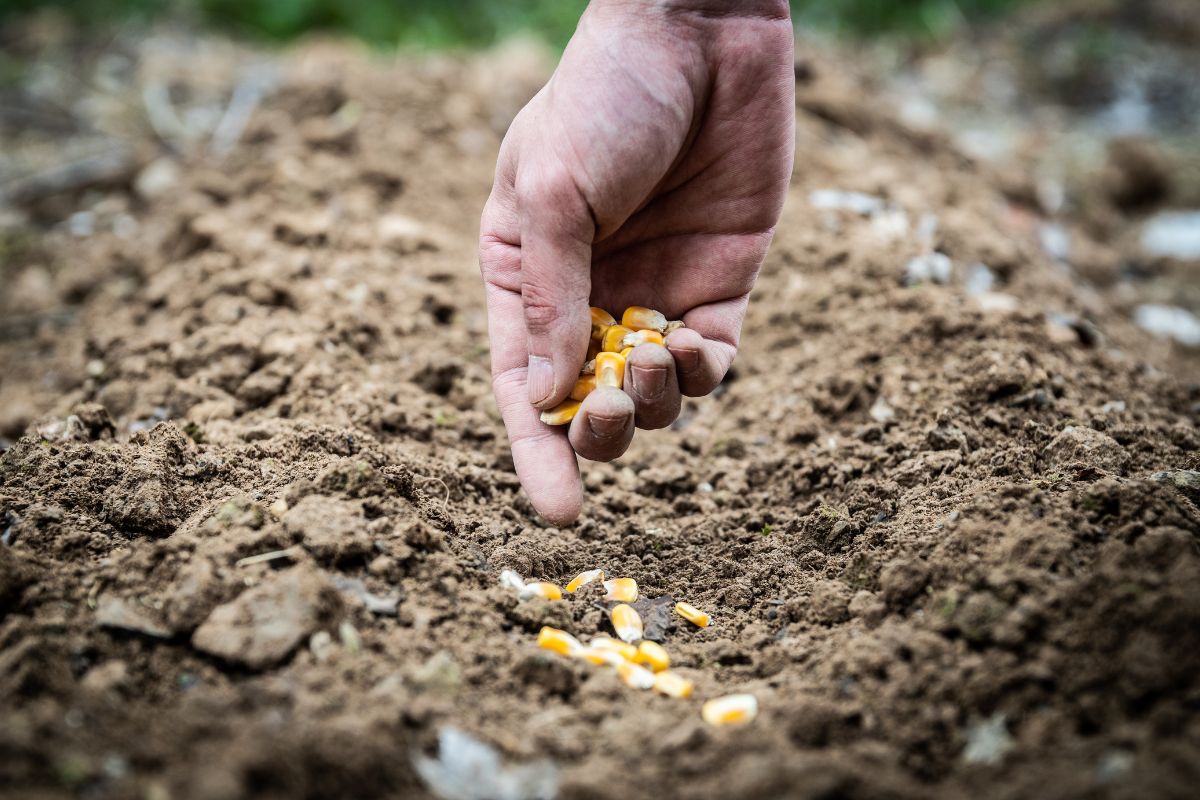
You are off to a good start when you have your corn planted a few days after the last frost of the year.
For the best experience in your corn planting journey, begin planting during early spring or late winter.
The reason? It is because the temperature at that time is more favorable for a perfect establishment.
An additional tip would be to plant them in a soil temperature set at 50°F, preferably to eliminate or drastically reduce the rate of pest invasion. It would be wise to have the soil fertilized first before proceeding to plant the seeds.
Have your corns planted in rows, showing them about 10 - 12 inches apart from one another to promote sideways expansion. A secret to increasing the eventual yield that a lot of people are not privy to is to have about 2 - 3 rows planted on both sides of the one at the center.
The essence of doing this is to encourage improved and adequate pollination, which would result in more yield for you.
Lastly, have the plant roots placed 1.5 inches into the soil because they are quite shallow. To satisfy fertilizer requirements, apply about 60 pounds of nitrogen on an acre. The results of your soil test would let you know the exact ratio of potassium and phosphorus to use.
2. Germination Stage
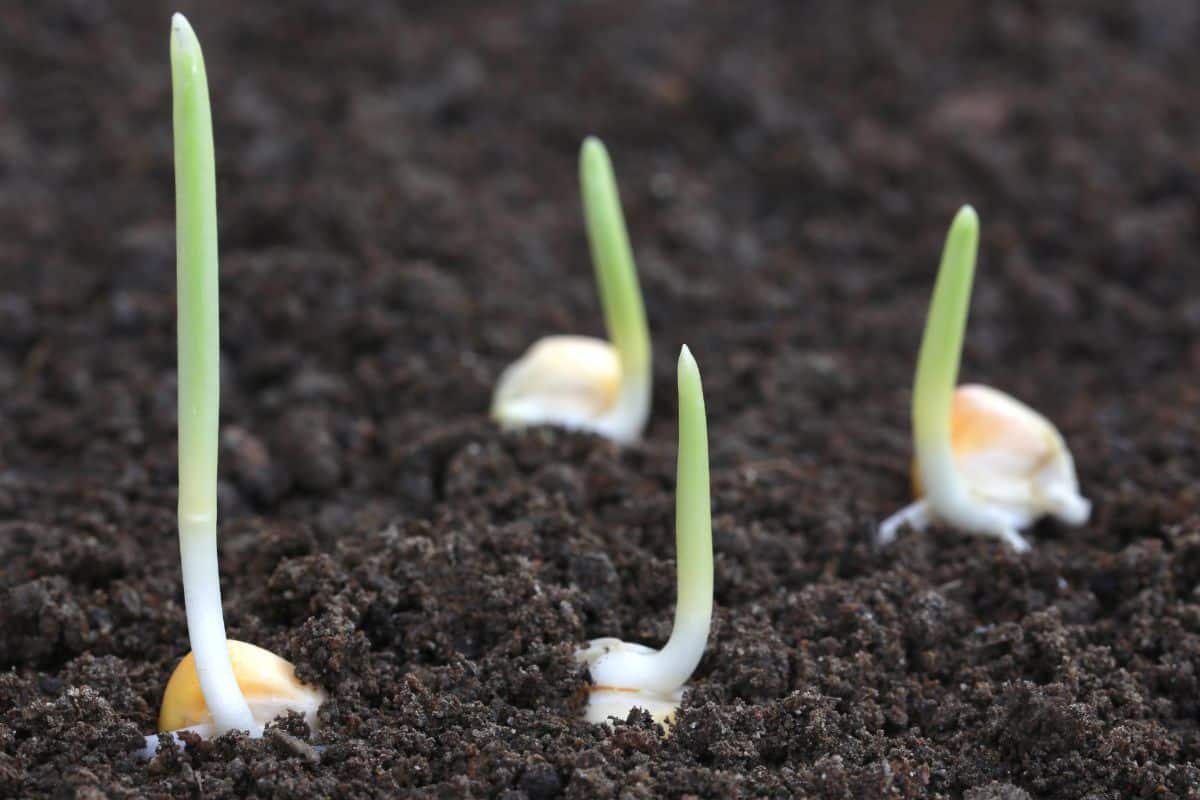
The germination process kicks off a little after you get the seeds planted. For this process to begin, the seed needs to be absorbed by water. However, this depends on the soil temperature and the right amount of moisture.
This is to say that, given the right circumstances, germination can take place in the space of 2 - 3 days. Otherwise, the radical reveal would take as long as 11 - 15 days.
To get a fast-paced germination process, you must satisfy the seed's soil and temperature requirements and get the proper surface area and planting depth.
3. Vegetative Growth Stage
Now, this is where the whole process gets intense. The vegetative growth stage is further divided into 3 other sub-stages, namely: VE, V1, and V18. Let's see an analysis of them below:
Emergence
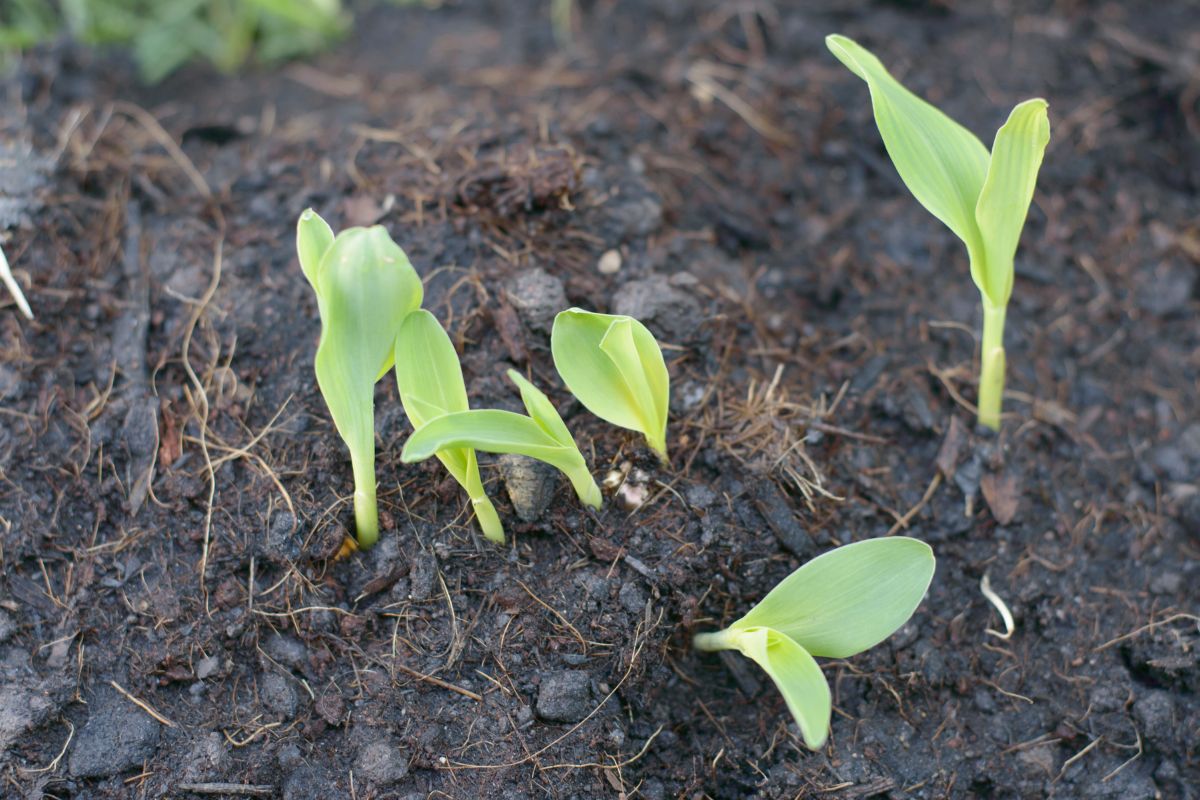
This happens when the root system shows its first signs of development. Here you find the sheath that somewhats shields the plant, sticks out, and make way for the emergence of the corn, sighted just below the surface of the soil.
Although, at this stage, the leaves are yet to make an appearance, you can only spot the coleoptiles.
First Full Leaf
Also known as the ‘Flag leaf.’ Once the emergence has occurred, you are then expected to see traces of leaf development of the very first leaf.
Full development of this leaf can only be attained when the color, usually stationed at the base, becomes visible.
The leaf reveals itself bearing a round tip. A fascinating fact about the first full leaf is that it is shaped with rounded ends and stands as the only leaf in the whole world with this peculiar trait.
Second Full Leaf
The significant area of the vegetative growth stage is the emergence of two leaves. This is because the successful completion of this stage rests on the emergence of two visible leaf collars on the new growth.
The leaves and every other one that comes right after will spot a pointed tip.
This is the stage in which the plant quits being dependent on the seed for its nutrient supply. It turns instead towards the process of photosynthesis for the generation of nutrients and sufficient energy supply.
You will also find the growth point shift from the base to above the soil's surface and notice the gradual degradation of the first leaf.
You should note, though, that the plant remains a seedling at this stage, actively in the process of vegetative growth.
Tillers
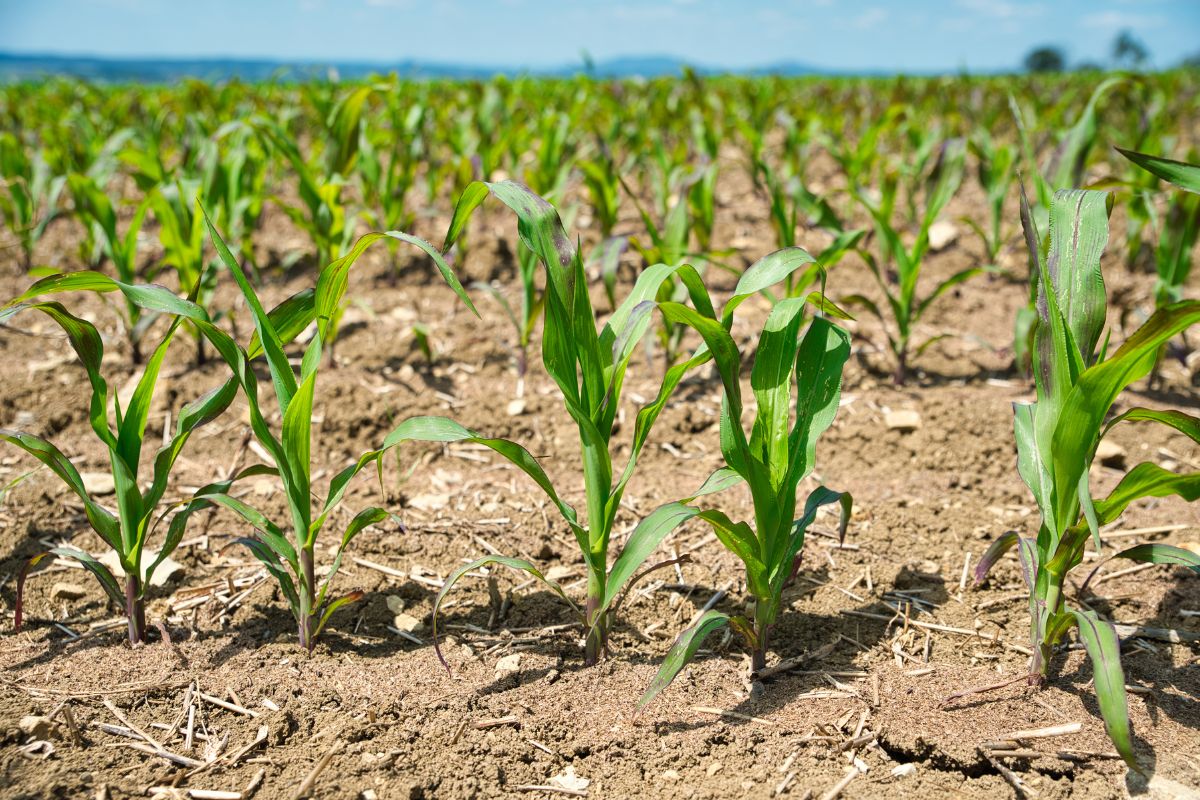
Simply put, Tillers are branches that grow from below to about seven nodes of your plant.
They begin to appear at this point. You will find them bear a striking resemblance to the main stalks. Tillers are actually able to develop their own root system.
Ear & Tassels
The appearance of Female structures (ears) and male structures (tassels) can be seen at this stage. You will, however, know more about that when they develop further during the reproductive stage.
Rapid Growth
Rapid growth indicates that the plant is maturing. This rapid growth phase would see lower leaves not capable of bearing ears probably die off at this stage.
Shaping And Sexual Development

The fast-paced growth of the plant is noticed at this point, with a dry accumulation of matter taking shape. The essence is for the emergence of ear shoots disguised as ears to spring forth up and down the plants through them.
Ear shoots seen on the upper part of the plant will later be the ones to be harvested.
A vital feature of this phase is also the visible formation of tassels over the corn plant.
This phase is very crucial and requires extra care. How you care for them at this stage will reflect in the eventual yield capacity of the crop.
Be vigilant to notice its moisture and nutrient needs even as they increase, cross-check the fertile status of the soil, and observe, from time to time, the plant as it grows.
End Of Leaf Production
The leaf production phase is wrapped up by the appearance of fully extended tassels, with silks missing. You are to see possible large leaves growing even bigger as the reproductive stage advances but not increasing in number.
At this point of growth, new vegetative growth on the plants shall cease. The silks would emerge for about 3 days, after which the tassels become clearly visible.
Furthermore, the plant is expected to shed its pollen for about 2 weeks in anticipation of the reproductive stage.
4. Reproductive Stage
The reproductive stage presents fully grown corn with ears still developing. This is when you get to figure out the overall number of kernels and the rows on the ears.
The primary focus of the plant at this stage is to reproduce and enable a continuation of the species by developing the kernels.
Below are the substages of the reproductive stage of corn growth:
Presence Of Silk
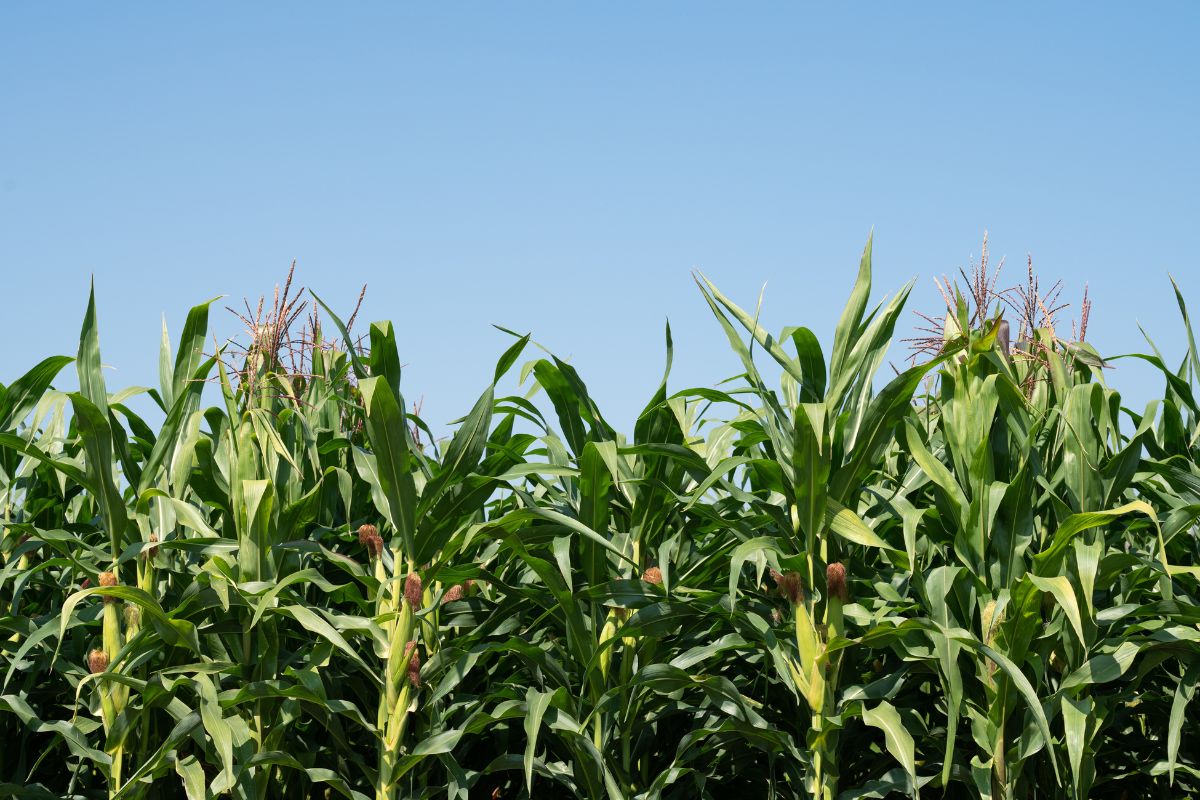
The appearance of silk from the far ends of the husk stands as the first phase of the reproduction process.
What is the role of the silk?
To bring together fallen pollen from completely matured tassels that would subsequently be sent down into the ovule, where pollination occurs. The silk would be stationed at the ears to grab any pollen that falls. The duration of this whole process should take roughly 24 or a few hours more at most.
How do you ensure a seamless pollination process?
Put the right environment and soil conditions in place, avoid any form of stress to the plant and ensure ample hydration. Drought would affect the capabilities of the silk to gather pollen.
Extra care is required as the plant is very vulnerable at this time.
Kernel Development
The next phase would see you welcome the kernels. These white and tiny elements should be checked for clear inner fluid. You can get signs of an existing disease if the fluid is not clear.
The fluid content should be around 85% but expect a reduction as kernels mature and turn yellow. The initial color - white, signifies high water content and immature kernels.
At this stage, the silk turns a brown color as the pollination process is over.
Yellowing
A significant feature of this phase is the accumulation of starch. This will see the clear inner liquid turn milky.
The kernels, on the other hand, show signs of maturity as their outer surface turns yellow.
Dry matter accumulation is still ongoing, so all forms of stress should be avoided to enable the kernels to attain their full potential.
The greatest highlight of this stage is a significant increase in cob size compared to the previous stage.
Starch Accumulation And Decrease In Moisture

This stage presents itself as dents on the kernels, signifying a drastic reduction in moisture (from 85 - 55%) and a corresponding increase in the starch found within each kernel.
The starch being accumulated would continue to evolve within the kernels and thicken. In due time, you will see it harden at the top and then fall downwards towards the cob.
Stress factors or late frost can negatively impact the kernel's weight at this time.
Maturity
Physiological maturity is officially the final stage of reproduction.
For this to happen, it means that the maximum amount of dry matter by the plant has been achieved, the layers in which the kernels attach to the cob (black layers) have been formed, and the starch that was hitherto at the top of the kernels has gotten to the cobs.
The presence of black layers indicates the complete development and maturity of the kernels. They now spot a deep yellow color with a drop in the moisture content to about 30%.
Frequently Asked Questions
What Are Factors That Affect The Growth Of Corn?
Find below the list of some prevalent factors that affect the growth and eventual yield of corn plants.
The presence of weeds
Insufficient nutrients
Usage of soil that is not well drained.
Weather
Foliar diseases
These are diseases that negatively affect the leaves of a tree; it's a shrub and even extends to other plants sometimes.
Too much soil compaction
A situation where soil particles are tightly compressed leads to reduced pore spaces between them.
What Does Corn Need To Grow Properly?
Soil needs: Corn needs a highly fertile soil inherent with helpful organisms.
Soil has to be well-drained, highly nutritional, and medium textured.
Climate needs: Corn plants thrive better under warm/mildly sunny weather.
Conclusion

Growing corn for personal or commercial use can be delightful and rewarding.
However, to ensure a satisfying experience and overall yield, you must learn the ropes of growing quality corn and the different stages of growth the plant passes through.
This will enable you to detect problems that spring up quite early as the plants develop and know the proper steps to correct them.
Your ability to do all these makes you a skilled gardener, and seeing you upscale your agronomic skills would be our pleasure.




